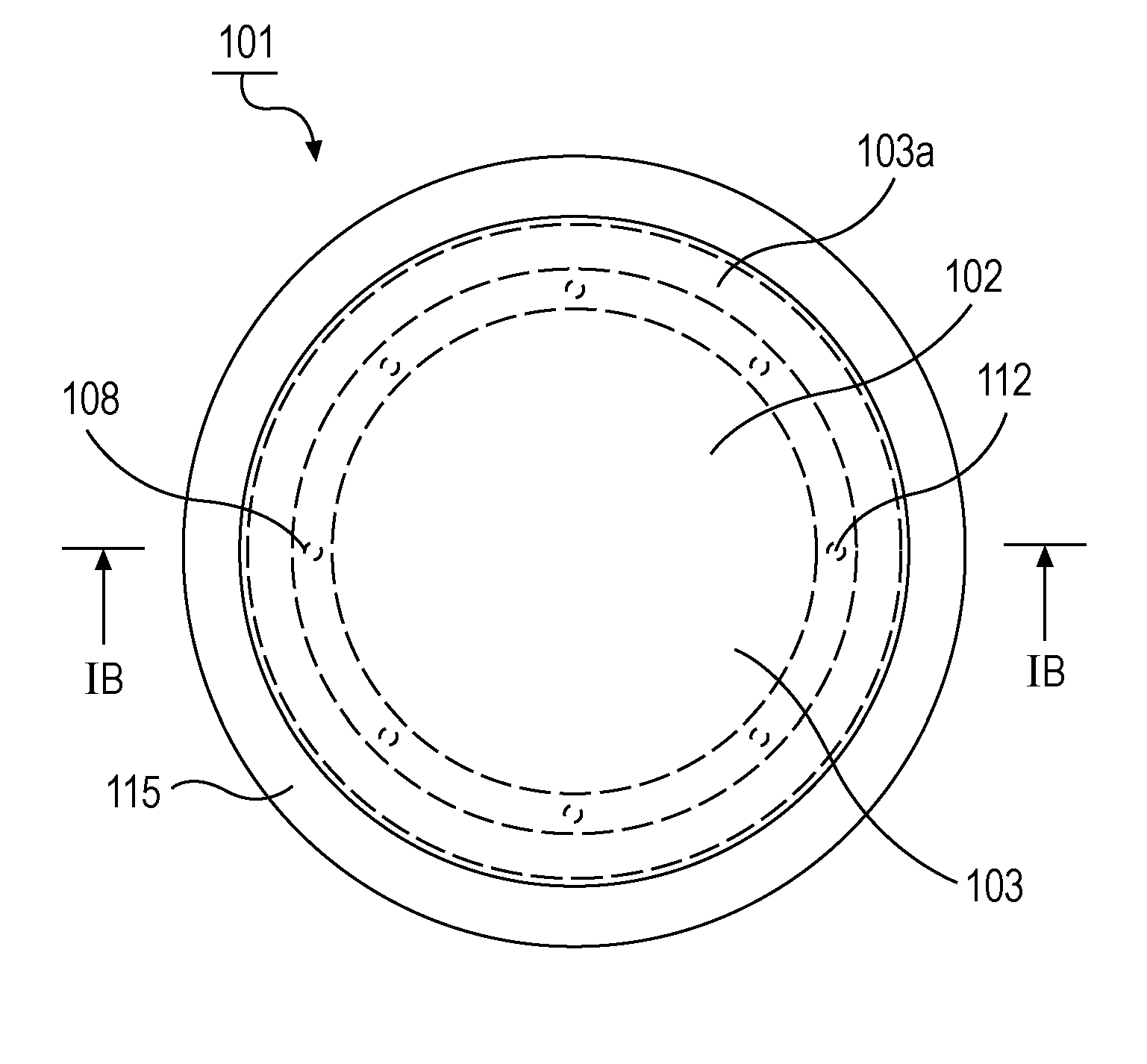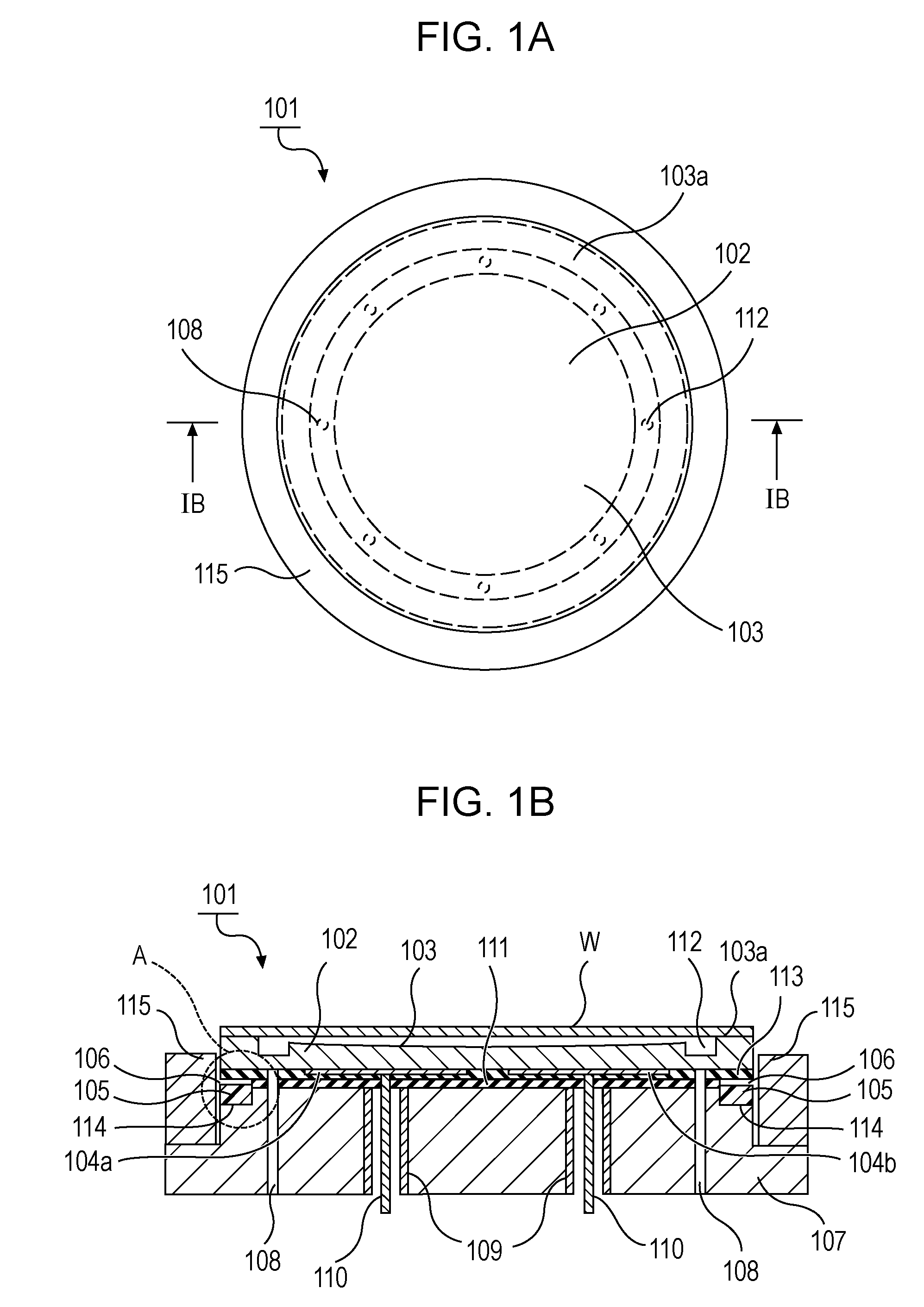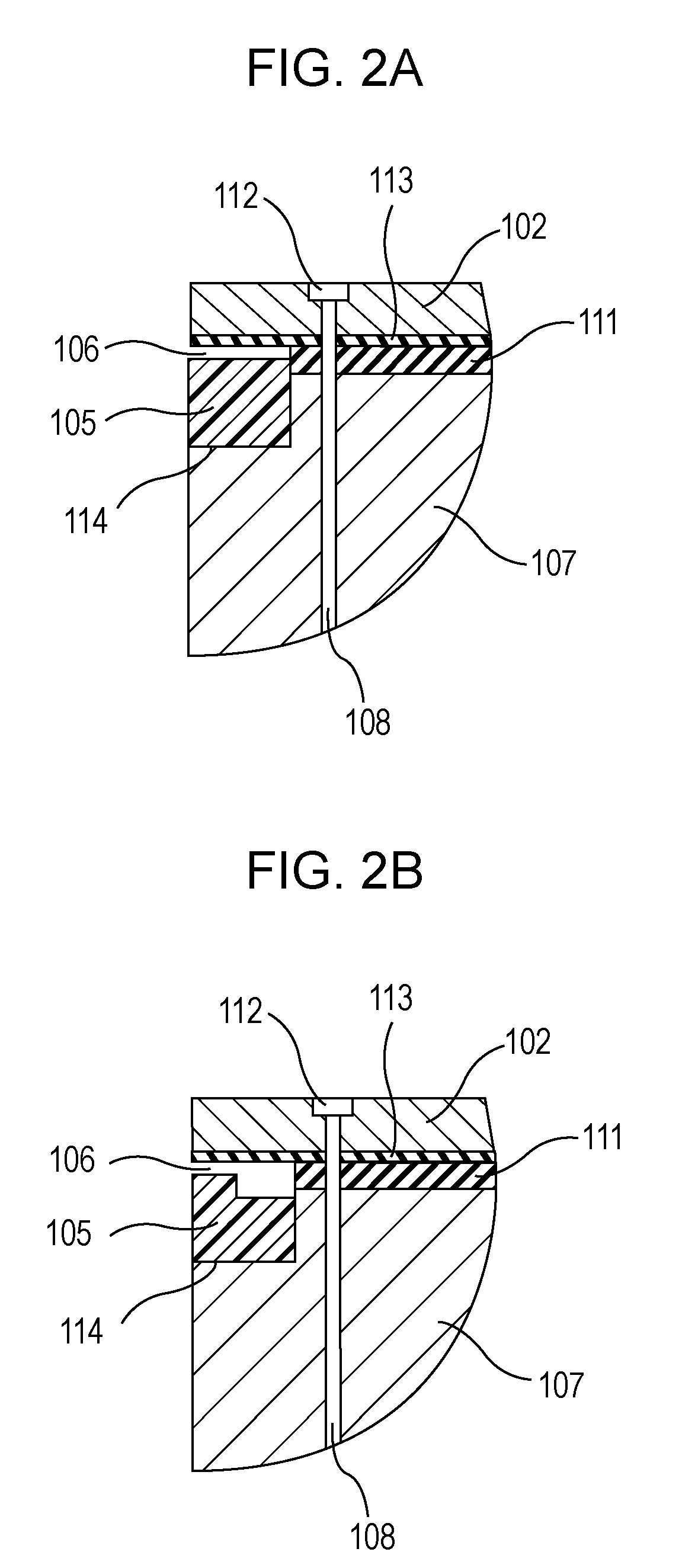Susceptor
a technology of suceptor and spherical tube, which is applied in the direction of chemical vapor deposition coating, electric discharge tube, coating, etc., can solve the problems of reducing the degree of vacuum inside the chamber, reducing the yield of the resulting products, and generating particles, so as to suppress the generation of particles, suppress the abnormal leakage of gas, and suppress the effect of extensive gas leakag
- Summary
- Abstract
- Description
- Claims
- Application Information
AI Technical Summary
Benefits of technology
Problems solved by technology
Method used
Image
Examples
example 1
[0064] A circular plate composed of an aluminum nitride sintered body having a diameter of 300 mm and a thickness of 3 mm was prepared. A nickel film was deposited on a main surface opposite to a supporting surface and subjected to blasting to remove unnecessary portions and to thereby form a pair of electrodes for electrostatic chucking made of nickel.
[0065] The position of forming the recess for accommodating a protective member was determined to be along the rim of the upper surface of the base member. A notch for forming the recess was formed in the rim portion of the upper surface of the base member. A protective member composed of Teflon® resin was formed to have an inner diameter smaller than the outer diameter of the notch in the base member by 20 to 100 μm. The protective member composed of Teflon® resin was retained under heating in a drier at 100° C., expanded until the protective member was larger than the outer diameter of the notch in the base member, and then press-f...
example 2
[0072] In order to study effects induced by the position of forming the recess, Sample 1 with a recess formed in the base member as shown in FIG. 3A, Sample 3 with a recess formed in the plate member as shown in FIG. 3B, and Sample 4 with a recess formed across in both the plate member and the base member as shown in FIG. 3C were prepared. The thickness of the base member was 1 mm in Sample 1, 5 mm in Sample 3, and 3 mm in Sample 4.
[0073] Each sample with a wafer chucked thereon in vacuum was exposed to oxygen plasma for 100 hours, and the number of particles 0.1 μm or larger and the number of particles 1 μm or larger deposited on the wafer were measured with a particle counter. The results are shown in Table 2.
TABLE 2Form of recessSamplePresence(see FIGS.No. of particlesNo. of particlesNo.of space3A to 3C)0.1 μm or larger1 μm or larger1Yes376213Yes352174Yes28913
[0074] The numbers of the particles 0.1 μm or larger in Samples 1 and 3 with a recess formed in the plate member and th...
example 3
[0080] In order to study the effect derived from the correlation between the outer diameter of the protective member and the outer diameter of the plate member, Sample 5 in which the outer diameter of the protective member was 1 mm larger than the outer diameter of the plate member in a radial direction, Sample 1 in which the outer diameter of the protective member was controlled to be the same as the outer diameter of the plate member by simultaneous grinding, and Sample 6 in which the outer diameter of the protective member was 1 mm smaller than the outer diameter of the plate member in a radial direction were prepared.
[0081] Each sample with a wafer chucked thereon in vacuum was exposed to oxygen plasma for 100 hours, and the number of particles 0.1 μm or larger and the number of particles 1 μm or larger deposited on the wafer were measured with a particle counter. The results are shown in Table 3.
TABLE 3Correlation between outerdia. of protective memberand outer dia. of plate...
PUM
| Property | Measurement | Unit |
|---|---|---|
| Elongation | aaaaa | aaaaa |
| Elongation | aaaaa | aaaaa |
| Elongation | aaaaa | aaaaa |
Abstract
Description
Claims
Application Information
 Login to View More
Login to View More - R&D
- Intellectual Property
- Life Sciences
- Materials
- Tech Scout
- Unparalleled Data Quality
- Higher Quality Content
- 60% Fewer Hallucinations
Browse by: Latest US Patents, China's latest patents, Technical Efficacy Thesaurus, Application Domain, Technology Topic, Popular Technical Reports.
© 2025 PatSnap. All rights reserved.Legal|Privacy policy|Modern Slavery Act Transparency Statement|Sitemap|About US| Contact US: help@patsnap.com



